The Social Security Administration (SSA) has finally issued a final rule on revised medical criteria for evaluating mental disorders for adults and children. This rule was issued on September 26, 2016 and become effective on January 17, 2017. The rule was published more than six years after the Notice of Proposed Rulemaking was published in the Federal Register. You can find the Federal Register publication at 75 Fed.Reg. 51336 or on the web at https://www.federalregister.gov/documents/2016/09/26/2016-22908/revised-medical-criteria-for-evaluating-mental-disorders. Below is a brief explanation of these new mental disorders listings.
Brand new listings and changes to new mental disorders listings
For example, there is a new title page, a listing for eating disorders as well as trauma and stressor-related disorders, and the separation of neurodevelopmental disorders from Listing 12.10 into its own listing. Also, SSA has removed the substance addiction disorders. Below is some more detail on some of these changes. Of course, you’ll need to read the Federal Register to get all of the details on the new mental disorders listings.
Listing 12.02, organic mental disorders, has been newly titled as neurocognitive disorders. SSA removed “repeated episodes of deterioration or decompensation, each of extended duration” criteria as part of the paragraphs B and C criteria. Generally, the A criteria of a listing refer to a set of medical findings, the B criteria refer to a set of impairment-related functional limitations and the C criteria to additional functional criteria.
For new mental disorder listing 12.02, the paragraph B criteria now requires an “extreme limitation of one, or marked limitation of two” of the following areas of mental functioning: 1) understand, remember, or apply information; 2) interact with others; 3) concentrate, persist, or maintain pace or 4) adapt or manage oneself. There is new paragraph C criteria requiring “medical treatment, mental health therapy, psychosocial support(s), or a highly structured setting(s) that is ongoing and that diminishes the symptoms and signs of your mental disorder,” instead of an “inability to function outside of a highly supportive living arrangement, with an indication of continued need for such arrangement,” for at least a year.
A Big Change in the New Neurocognitive Mental Disorders Listing
Importantly, the new neurocognitive mental disorders listing has removed “loss of the measured intellectual ability of at least 15 IQ points…” from the A paragraph of the listing. Instead, a claimant must demonstrate “medical documentation of a significant cognitive decline from a prior level of functioning in one or more of the cognitive areas of 1) complex attention, 2) executive function, 3) learning and memory, 4) language, 5) perceptual-motor, or 6) social cognition.
Besides changing listing 12.02, listing 12.04 has been renamed from affective disorders to depressive, bipolar and related disorders. In this revised listing, the paragraph A criteria are no longer separated into depressive, manic, and bipolar syndrome. The new listing now includes depressive and bipolar disorder each with different symptoms that must “characterize” the disorder. There are five symptoms for depressive disorder and three for bipolar disorder. The paragraphs B and C criteria in this new listing 12.04 are the same as listing 12.02 as described above. As you can see, there is some consistency among the new mental disorders listings.
There have been multiple changes to listing 12.05 – intellectual disability. For example, it has been renamed to “intellectual disorder.” Although the listing still requires that the disorder began before age 22, there have been substantive changes in how the listing is satisfied. This listing can be explored in a separate blog post.
Other important changes include a newly titled listing 12.06, which is now called anxiety and obsessive-compulsive disorders (formerly, anxiety-related disorders). This revamped listing now separates the criteria for anxiety disorder, panic disorder and agoraphobia, and obsessive-compulsive disorder. As in new listing 12.04, listing 12.06 requires that each disorder be “characterized” by different symptoms. There are three symptoms for anxiety disorder, one for panic disorder and agoraphobia, and one for obsessive-compulsive disorder. The paragraphs B and C criteria, however, remain are the same as in listing 12.04.
A Brand New Eating Disorders Listing, and Others
As mentioned above, there is a brand-new eating disorders listing (12.13). This listing requires evidence of “a persistent alteration in eating or eating-related behavior that results in a change in consumption or absorption of food and that significantly impairs physical or psychological health” and an “extreme limitation of one, or marked limitation of two, of the following areas of mental functioning: 1) understand, remember, or apply information; 2) interact with others; 3) concentrate, persist, or maintain pace; or 4) adapt or manage oneself.”
If that weren’t enough, there is a new mental disorders listings including a trauma- and stressor-related disorders (12.15). It requires medical documentation of all of the following: 1) exposure to actual or threatened death, serious injury or violence; 2) subsequent involuntary re-experiencing of the dramatic event (for example, intrusive memories, dreams or flashbacks); 3) avoidance of external reminders of the event; 4) disturbance in mood and behavior; and 5) increases in arousal and reactivity (for example, exaggerated startle response, sleep disturbance).
Because there have been so many changes in the new mental disorders listings, it will take some time for mental health providers, patients, claimant representatives and the Social Security Administration to become familiar with these new and updated listings. There also will be different interpretations of these listings as cases reach our federal court system. It will be interesting to see how these changes affect adjudication of these claims.
